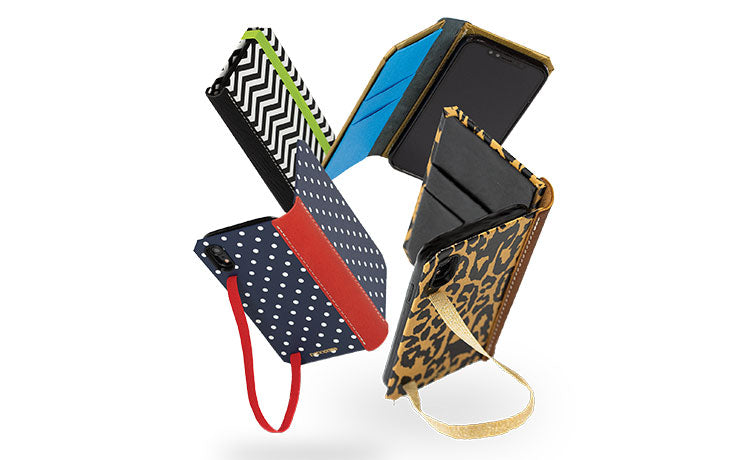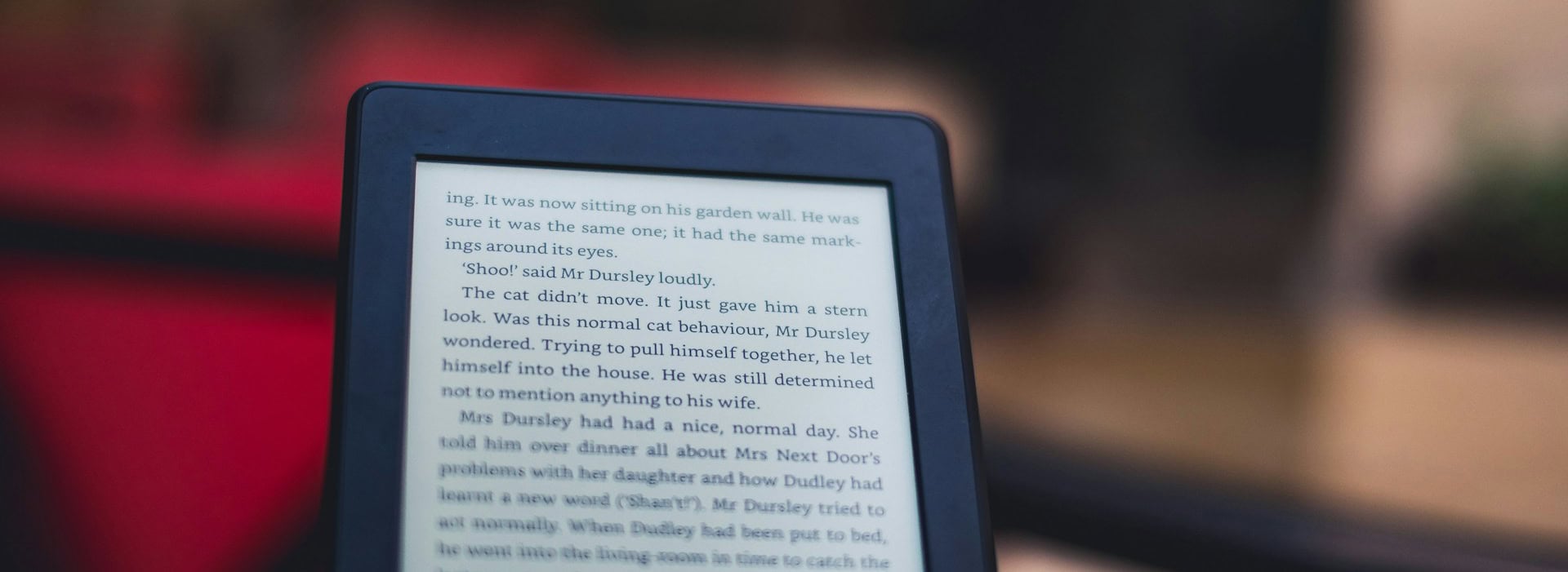Picking a device for digital reading presents a modern crossroads for consumers. Should you opt for a gadget built purely for books, or a powerful tablet that can do almost anything? The decision places two opposing philosophies in competition.
Amazon's Kindle is a purpose-built sanctuary for stories, engineered to help you get lost in a book without the pull of notifications and apps. In contrast, Apple's iPad is a brilliant, all-in-one portal for entertainment, productivity, and communication, where reading is just one of many functions.
The best fit for you depends entirely on what you prioritize: a quiet, focused library or a bustling digital hub.
The Core Reading Experience
How a device feels to read on for hours at a time is a critical consideration. The experience is shaped by two major elements: the screen technology itself and the software environment it operates in.
One device is engineered to replicate the comfort of a printed page, while the other provides a gateway to all forms of digital media, which directly impacts your ability to stay immersed in a story.
Screen Technology
The Kindle’s E-Ink display is often described as “digital paper” for good reason. It reflects light from the environment, much like a physical book, instead of projecting light into your eyes.
This design makes the screen glare-free, allowing you to read comfortably in bright sunlight without squinting. For anyone who enjoys long reading sessions, the lack of a harsh backlight significantly minimizes eye strain, making it feel more natural and less fatiguing over time.
In contrast, the iPad features a vibrant LCD or OLED screen that brings images and videos to life with brilliant color and clarity. This display is outstanding for browsing magazines, viewing graphic novels, or watching movies.
However, because the screen is backlit, it can cause reflections and glare in certain lighting conditions. For marathon reading, the constant light emission can lead to eye fatigue more quickly than an E-Ink display.
A Sanctuary for Focus vs. A Hub of Distraction
For many readers, the Kindle’s most valuable asset is its deliberate simplicity. Its single-purpose design creates a sanctuary for reading.
With no access to social media, email notifications, or web browsers popping up, it allows for a deeply immersive experience. The device is built to help you get lost in a book, free from the constant pull of digital interruptions that define modern life.
The iPad, by its very nature, is a multitasking powerhouse. While you can read on it, the device is also your connection to email, messages, news alerts, and countless other applications.
A simple notification can easily pull your attention away from your book. The temptation to switch apps and quickly check something is always present, making it difficult to maintain the deep, uninterrupted concentration that many readers seek.
Hardware Design and Practicality

Beyond the screen, the physical design and daily usability of a device determine how well it fits into your life. The way it feels in your hand and how often you need to find a power outlet are practical considerations that shape the overall ownership experience.
Here, the philosophies of focused design versus multipurpose utility become very tangible.
Ergonomics and Portability
A Kindle is engineered for comfort during long reading spells. It is exceptionally lightweight and compact, often comparable to a thin paperback in both size and weight.
This makes it easy to hold with one hand for hours without strain, whether you are lying in bed, sitting on a couch, or commuting. Its design prioritizes effortless, long-term handling, allowing the physical device to fade into the background.
An iPad, while sleek and beautifully constructed, has a noticeably larger and heavier form factor. Its weight becomes apparent when trying to hold it up for an extended time, often requiring two hands or a stand for comfortable reading.
While its size is an asset for watching videos or browsing the web, it can become a drawback for simple, one-handed reading, making it feel less like a book and more like a slab of glass and aluminum.
Battery Life
The Kindle's battery performance is perhaps its most significant practical advantage. Because its E-Ink screen only uses power when the page is turned, a single charge can last for several weeks of daily reading.
You can pack a Kindle for a vacation and often leave the charger at home. This exceptional efficiency offers a level of convenience that is difficult to match and removes any anxiety about running out of power mid-chapter.
The iPad’s powerful display and processor require significantly more energy, meaning it typically needs to be charged every day or two with regular use. Its battery life is measured in hours, not weeks.
For travelers, this means another charger and cable to pack and a daily routine of ensuring the device is topped up. While sufficient for a general-purpose tablet, its power consumption makes it far less convenient for readers who want a grab-and-go device without worrying about its battery level.
Content Ecosystem and Library Access

A device is only as good as the content you can access on it. The way each gadget connects you to digital storefronts and libraries, along with how it handles different types of media, reveals another core difference in their design.
One offers a streamlined path from a single, massive source, while the other acts as an open platform for multiple content providers.
Ebook Stores and Subscriptions
The Kindle is built around the Amazon ecosystem. Buying and downloading books is a seamless process performed directly on the device through the integrated Kindle Store.
Its deep connection to Amazon also provides easy access to the popular Kindle Unlimited subscription service, which offers a large catalog of ebooks and audiobooks for a monthly fee. This all-in-one approach offers simplicity and great convenience for readers who primarily use Amazon for their literary purchases.
The iPad provides far greater flexibility for sourcing your reading material. While it runs the Kindle app flawlessly, it is not locked into any single bookstore.
You can install Apple Books, the Kobo app, and reading apps from other retailers. More importantly, it offers full access to public library collections through applications like Libby and Hoopla, letting you borrow ebooks for free.
This freedom makes the iPad a superb choice for readers who acquire books from a variety of sources.
Beyond Text: Color and Multimedia
For any content that relies heavily on visuals, the iPad is the undisputed superior device. Its brilliant, full-color display makes it ideal for reading digital magazines, which retain their rich layouts and glossy photographs.
Graphic novels and comic books appear vibrant and dynamic, presented just as the artists intended. Similarly, illustrated children's books come to life on the iPad's screen, creating an engaging experience for young readers.
The Kindle’s display is optimized for text, so its primarily black-and-white E-Ink screen is not well-suited for visual media. While you can read graphic novels on a Kindle, they are rendered in shades of gray, an effect that flattens the artwork and diminishes the intended impact.
For magazines or books where color photography and illustrations are central to the experience, the Kindle cannot deliver the rich, visual presentation that these formats demand.
Versatility and Productivity

A device's utility extends beyond its primary function. The decision between a Kindle and an iPad often comes down to what else you need your device to do.
One is a highly specialized tool designed for a single purpose, while the other is a powerful computer capable of handling a wide range of tasks for work, creativity, and entertainment.
The Specialist vs. The Generalist
The Kindle is a master of one trade. It is optimized almost exclusively for reading ebooks and, on supported models, listening to audiobooks through Audible.
Its software offers no web browser, no email client, and no app store filled with games or social media. This deliberate limitation is what makes it so effective as an e-reader; its entire design is focused on delivering a superior reading experience without distractions.
It does not try to be anything more than the world's best digital book.
In contrast, the iPad is the ultimate jack-of-all-trades. Reading is just one of the hundreds of things it does well.
It's a portable movie theater for streaming services, a powerful gaming console, a full-featured web browser, and a communication hub for email and video calls. For creative pursuits, it can be a digital canvas or a music production studio.
Its purpose is to be whatever you need it to be, offering a vast universe of applications that extend its functionality far beyond consumption.
Tools for Work and Study
For students and professionals, the iPad offers a suite of tools the Kindle simply cannot match. Its large, high-resolution screen is excellent for reviewing complex documents, textbooks, and academic papers in their original PDF format.
The App Store is filled with robust productivity applications, from Microsoft Office and Google Docs to advanced note-taking and project management software.
The most significant advantage for work and study is the support for the Apple Pencil. This accessory turns the iPad into a dynamic digital notebook.
Students can annotate lecture slides, highlight text, and take handwritten notes directly on documents. Professionals can sign contracts, sketch out ideas, and mark up reports with precision.
This capability to interact directly with content makes the iPad an exceptionally powerful and flexible tool for any task that requires more than just reading.
To fully leverage this mobile workstation, the right case is essential. A traditional book-bound case like the DODOcase not only protects the device but adds critical functionality.
Its design incorporates a multi-angle stand for comfortable typing and viewing, as well as a built-in loop to keep the Apple Pencil secure. This effectively bundles the powerful iPad-and-Pencil combination into a single, organized, and professional-looking portfolio.
Cost and Overall Value

The price tag is often a decisive element in any technology purchase. A simple comparison of sticker prices reveals a clear difference between the two devices, but the concept of value goes deeper than the initial expense.
The true worth of a Kindle or an iPad depends on how its cost aligns with your personal requirements and what you expect the device to accomplish for you.
The Upfront Investment
When looking purely at the initial purchase price, the Kindle is significantly more affordable. The entry-level Kindle model costs a small fraction of the price of the most basic iPad, making it an exceptionally accessible device for anyone wanting to get into digital reading.
Even Amazon's most premium, feature-rich Kindle models are typically priced lower than the standard entry-level iPad. The financial barrier to owning a dedicated e-reader is quite low.
The iPad, on the other hand, represents a more substantial financial commitment, as its price reflects its status as a powerful, general-purpose tablet computer.
Defining Value for Your Needs
The question of long-term value requires you to look beyond the price and consider your own priorities. If your primary, or even sole, reason for buying a device is to read books, the iPad's higher cost is difficult to justify.
You would be paying a premium for a powerful processor, a brilliant color screen, and a vast ecosystem of apps that you may never use for your main activity. From this perspective, the Kindle offers outstanding value by perfecting the reading experience for a much lower price.
However, if you are looking for a single device that can handle reading alongside web browsing, video streaming, work tasks, and creative projects, the iPad's value proposition becomes much stronger. Its higher cost can be seen as an investment in versatility, potentially replacing the need for a separate laptop or other gadgets.
The best value is therefore not universal; it is determined by weighing the device's price against the specific features you will actually use.
Conclusion
Choosing between a Kindle and an iPad is a matter of defining your primary goal. The devices represent a fundamental trade-off.
A Kindle provides an unmatched, immersive reading experience, with an eye-friendly screen and a distraction-free environment designed to let you lose yourself in a story. The iPad, on the other hand, is an all-encompassing hub for functionality, capably handling everything from complex work documents to high-definition movies.
Reading is simply one of its many talents.
The best choice is not the same for everyone; it depends entirely on your personal habits, lifestyle, and budget. An avid book lover who wants a dedicated escape will find the Kindle to be the perfect tool.
A student, professional, or general user needing a single, flexible device for reading, work, and entertainment will see the value in the iPad's broad capabilities. In the end, they are less like direct competitors and more like specialized instruments, each built to perform a different job exceptionally well.



